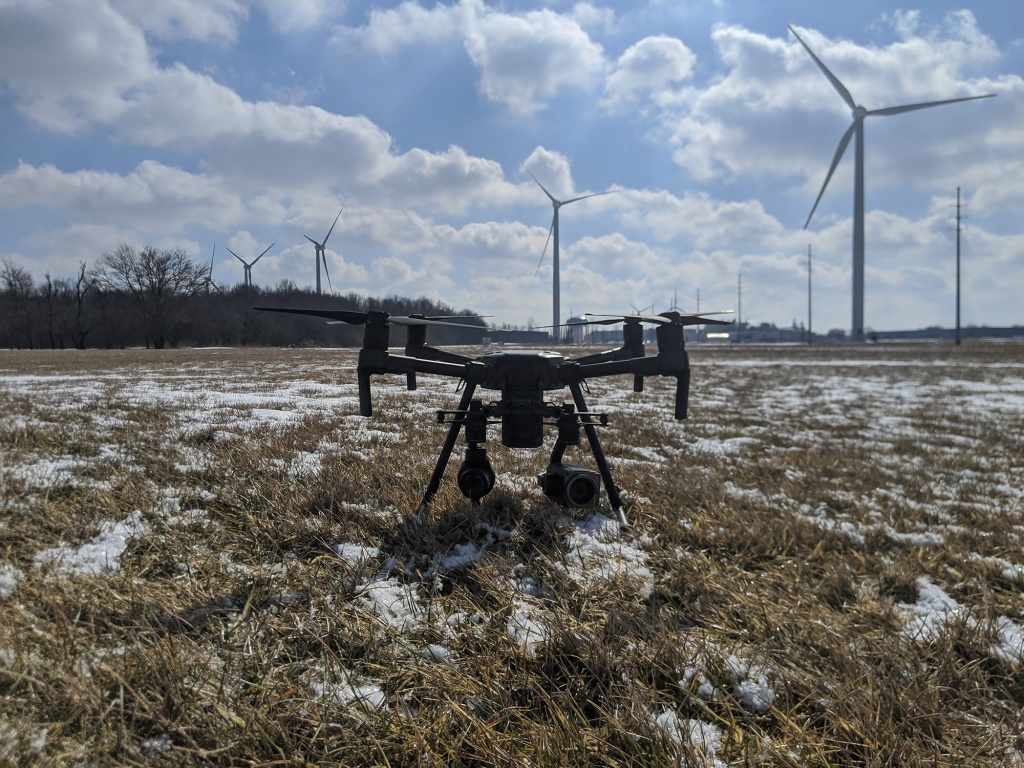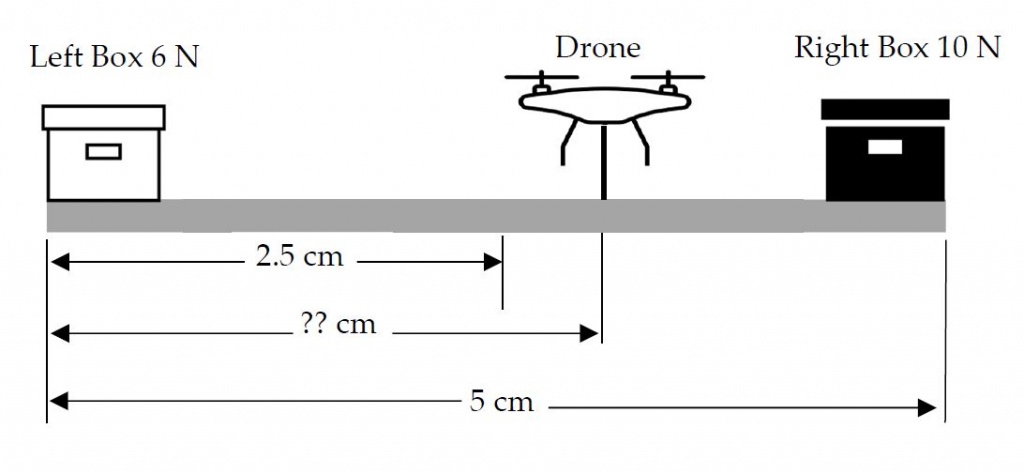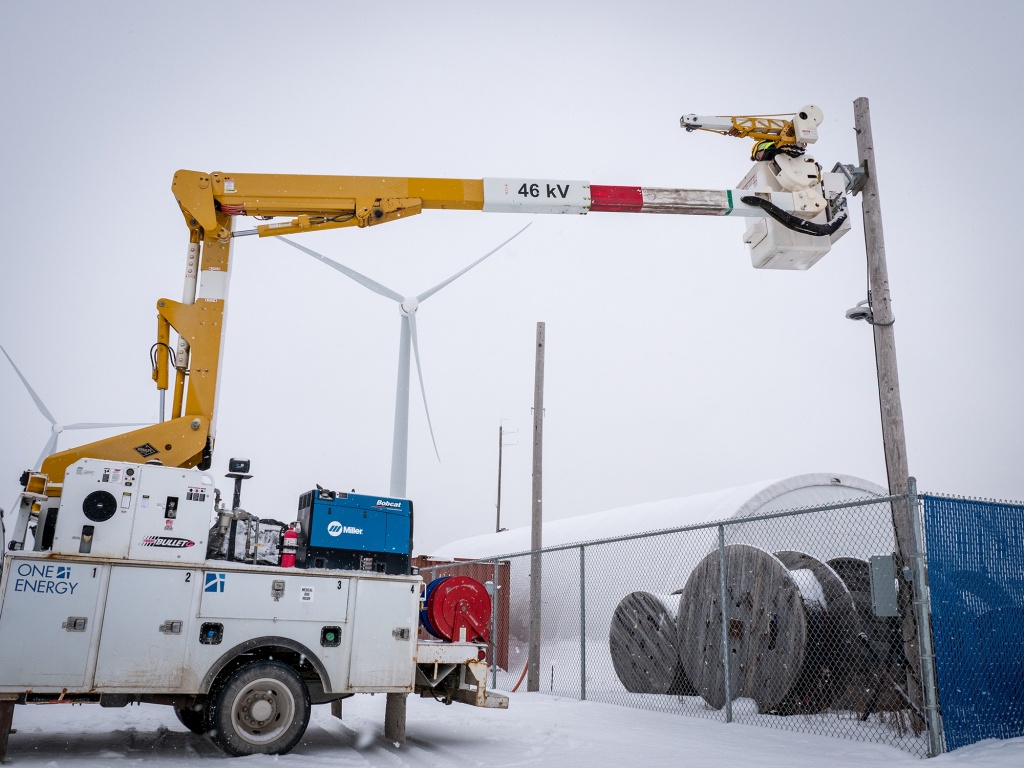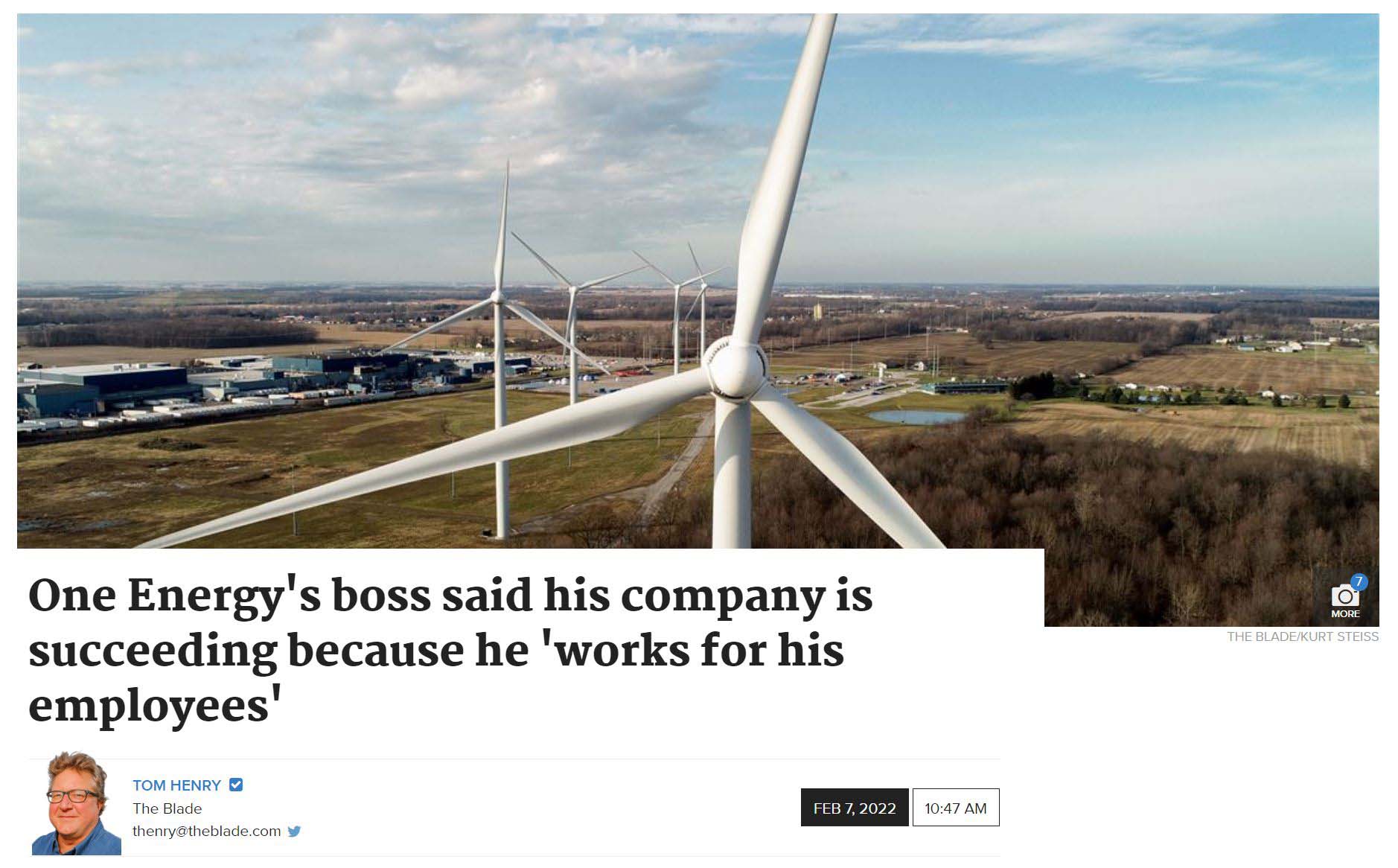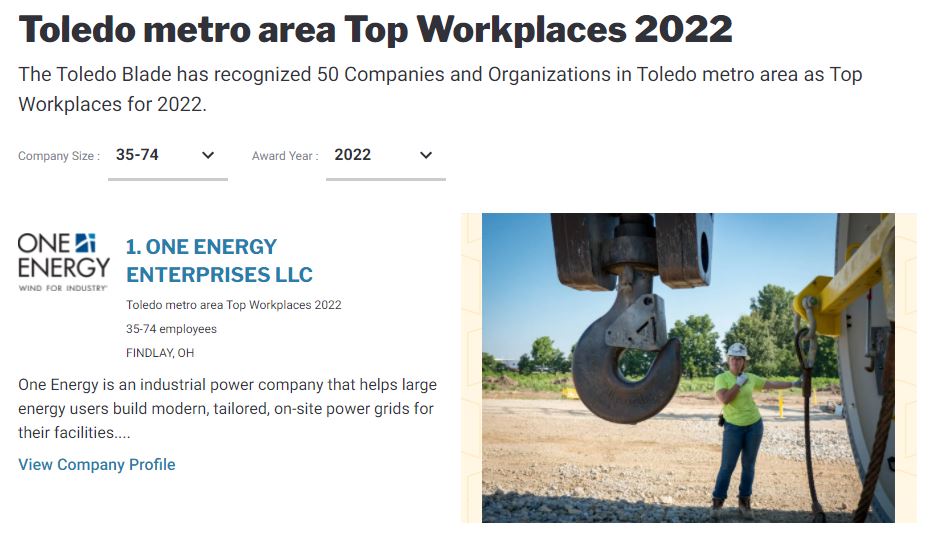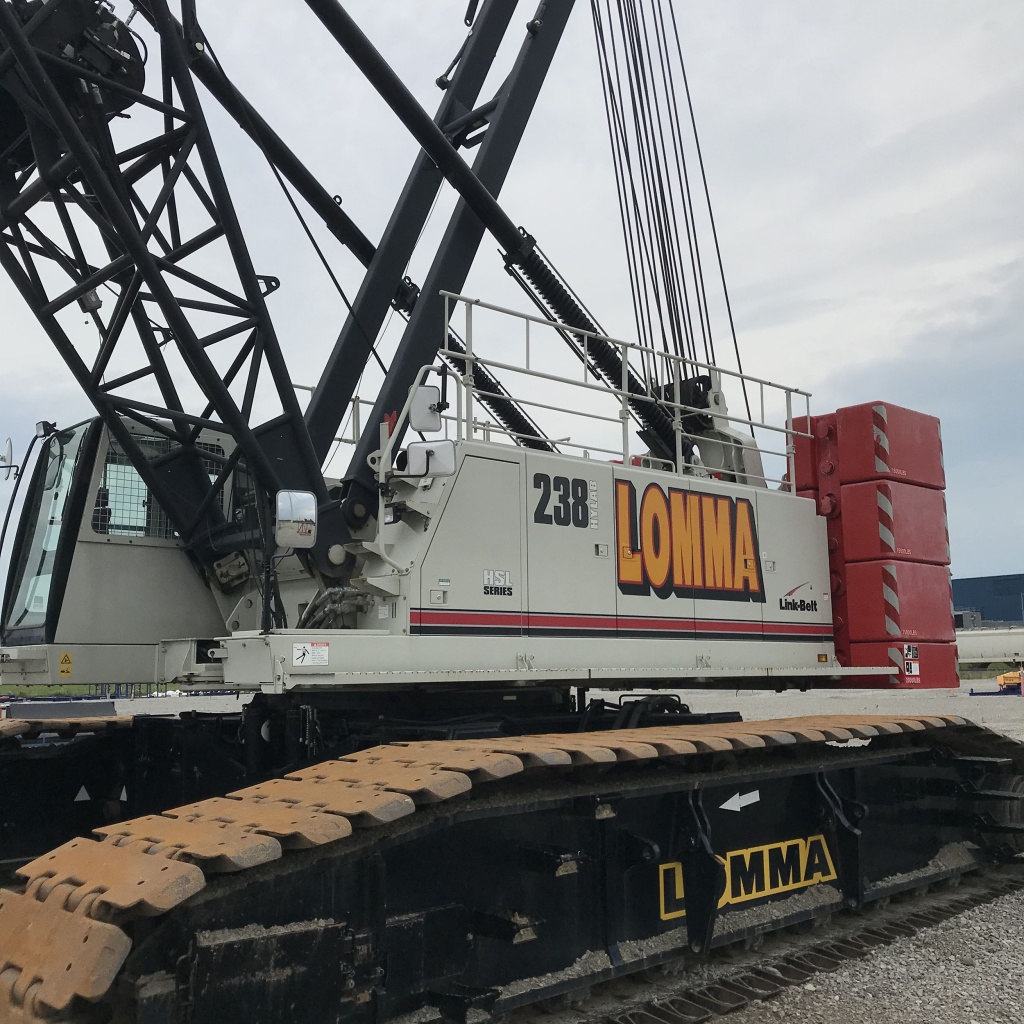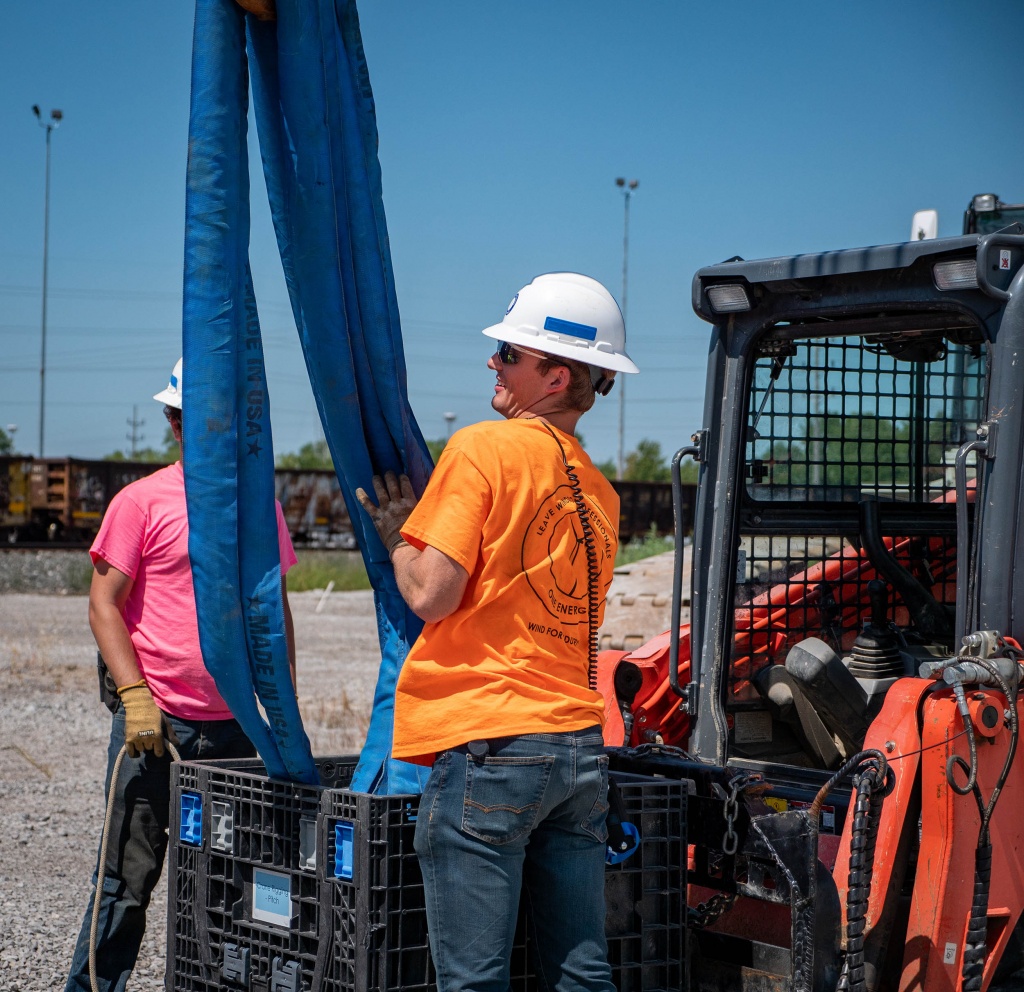ONE POWER FEED

SUBSCRIBE
CONNECT WITH US
News Filters
Reporter Jennifer Hiller from The Wall Street Journal explored how businesses are grappling with a less reliable grid by seeking power-independence. Grid reliability isn’t the only driver for this trend, however. As Jennifer notes, “the cost of renewables have fallen enough that some companies are adding on-site renewables to reduce their use of power from the electric grid.”
One Energy customer Whirlpool Corporation and their Findlay Wind for Industry® project were highlighted in the WSJ piece. Ron Voglewede, global sustainability lead at Whirlpool, had the following to say about their project: “It’s not just green, it’s also cheaper.”

The formation of One Energy’s Board of Directors was highlighted in the Winter 2022 edition of the National Association of Corporate Directors (NACD) Directorship publication.
Board members Thomas Lause (VP, CFO of the University of Findlay, retired from Cooper Tire & Rubber Co.), Thomas Spang (Advanced Power), Don Templin (retired President of Marathon Petroleum), and Jon Wellinghoff (former FERC Chairman, former Chief Policy Officer at SolarCity / Tesla) were featured in the piece.



Reporter Tom Henry from The Blade out of Toledo, Ohio revisited One Energy’s headquarters to do a follow-up interview with CEO Jereme Kent on what it means for the company to be named a Top Workplace. Read the follow-up piece here and learn more about the unique ways the company is going above and beyond to attract the best talent and remain a place where people want to work.
We’re proud to be one of the Toledo Blade’s Top Workplaces in Northwest Ohio for 2022!
A big congratulations to the entire One Energy team!



